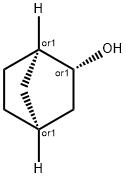Nadic anhydride
Synonym(s):5-Norbornene-2,3-dicarboxylic anhydride
- CAS NO.:826-62-0
- Empirical Formula: C9H8O3
- Molecular Weight: 164.16
- MDL number: MFCD00213361
- EINECS: 212-557-9
- SAFETY DATA SHEET (SDS)
- Update Date: 2025-01-27 09:38:02

What is Nadic anhydride?
Description
The substance 5-norbornene-2,3-dicarboxylic anhydride has a purity of approximately 99.5 % and consists of two isomers, cis-5-norbrene-endo-2,3-dicarboxylic anhydride (99.2 %) and cis-5-norbreneexo-2,3-dicarboxylic anhydride (0.3 %). It has an estimated log Po/w = 2.3. Due to its chemical nature as an anhydride it readily hydrolyses into the free diacid, norbornene-2,3-dicarboxylic acid. Therefore, migration into aqueous foodstuffs will also lead to the presence of the two isomeric diacids. Melting point of the substance is 163-165 °C.
Chemical properties
white solid
The Uses of Nadic anhydride
5-Norbornene-2,3-dicarboxylic anhydride, as a copolymer monomer in polyester can coatings up to 18.3 % w/w in the final dry coating, does not pose a safety concern to the consumer under sterilised conditions and prolonged contact with all foodstuffs (except beverages).
What are the applications of Application
Bicyclo[2.2.1]hept-5-ene-2,3-dicarboxylic anhydride is a norbornene compound for proteomics research
Reactions
Bicyclo[2.2.1]hept-5-ene-2,3-dicarboxylic anhydride reacts with methyl aminomethyllambertianate to give amide of bicyclo[2.2.1]heptan-1,2-dicarbocylic acid with a labdanoid substituent.
Safety Profile
Mild skin and severe eye irritant.When heated to decomposition it emits acrid smoke andirritating fumes.
Toxicity evaluation
In a cytogenetic test in vitro, 5-norbornene-2,3-dicarboxylic anhydride was clastogenic both in presence and absence of an exogenous metabolic activation system. Gene mutation assays in bacteria and cultured mammalian cells provided negative results. When administered to rats by the oral route at the maximum tolerated dose, 5-norbornene-2,3-dicarboxylic anhydride was not clastogenic/aneugenic in bone marrow, and did not induce DNA damage in liver and at the site of first contact (stomach) in a combined micronucleus and comet assay. It is concluded that the clastogenic activity of 5-norbornene2,3-dicarboxylic anhydride observed in vitro is not expressed in vivo, and that 5-norbornene-2,3- dicarboxylic anhydride does not raise concern for genotoxicity.
Properties of Nadic anhydride
| Melting point: | 165-167 °C(lit.) |
| Boiling point: | 251.61°C (rough estimate) |
| Density | 1.2132 (rough estimate) |
| refractive index | 1.5260 (estimate) |
| storage temp. | Inert atmosphere,Room Temperature |
| solubility | diethyl ether: soluble0.1g/10 mL, clear, colorless |
| form | powder to crystal |
| color | White to Almost white |
| Specific Gravity | 1.250 (20/4℃) |
| Merck | 14,1796 |
| BRN | 150228 |
| InChI | InChI=1S/C9H8O3/c10-8-6-4-1-2-5(3-4)7(6)9(11)12-8/h1-2,4-7H,3H2 |
| CAS DataBase Reference | 826-62-0(CAS DataBase Reference) |
| EPA Substance Registry System | 4,7-Methanoisobenzofuran-1,3-dione, 3a,4,7,7a-tetrahydro- (826-62-0) |
Safety information for Nadic anhydride
| Signal word | Danger |
| Pictogram(s) |
 Corrosion Corrosives GHS05  Health Hazard GHS08 |
| GHS Hazard Statements |
H317:Sensitisation, Skin H318:Serious eye damage/eye irritation H334:Sensitisation, respiratory |
| Precautionary Statement Codes |
P261:Avoid breathing dust/fume/gas/mist/vapours/spray. P280:Wear protective gloves/protective clothing/eye protection/face protection. P305+P351+P338:IF IN EYES: Rinse cautiously with water for several minutes. Remove contact lenses, if present and easy to do. Continuerinsing. P342+P311:IF experiencing respiratory symptoms: call a POISON CENTER or doctor/physician. |
Computed Descriptors for Nadic anhydride
| InChIKey | KNDQHSIWLOJIGP-UHFFFAOYSA-N |
| SMILES | C1(=O)C2C(C3CC2C=C3)C(=O)O1 |
New Products
Indole Methyl Resin tert-butyl 9-methoxy-3-azaspiro[5.5]undecane-3-carboxylate Boc-His(Boc)-OH 2-CTC Resin 4-Chloro-7-tosy1-7Hpyrrolo[2,3-d]pyrimidine 5,7-Dibromo-1H-indole 2,5-dichloro-N-hydroxy-4,6-dimethylpyridine-3-carboximidamide 2,2-Dimethoxy-7-azaspiro[3.5]nonane hydrochloride 4-chloromethyl-5-methyl-1,3-dioxol-2-one (DMDO-Cl) R-2-BENZYLOXY PROPIONIC ACID 1,1’-CARBONYLDIIMIDAZOLE 1,1’-CARBONYLDI (1,2-4 TRIAZOLE) N-METHYL INDAZOLE-3-CARBOXYLIC ACID 4-((2-hydroxyethyl)thio)benzoic acid 1-(TERT-BUTOXYCARBONYL)-2-PYRROLIDINONE Methyl 6-methylnicotinate 3-Pyridineacrylic acid tert-Butyl carbazate TETRAHYDRO-2H-PYRAN-3-OL 2-((4-morpholinophenylamino) (methylthio) methylene) malononitrile 3-(4-morpholinophenylamino)-5-amino-1H-pyrazole-4-carbonitrile 2,4-dihydroxybenzaldehyde 1,3-Diethyl-1,3-Diphenylurea Methyl 2-methylquinoline-6-carboxylateRelated products of tetrahydrofuran
![Bicyclo[2.2.2]oct-7-ene-2,3,5,6-tetracarboxylic acid dianhydride](https://img.chemicalbook.in/CAS/GIF/1719-83-1.gif)
![Bicyclo[2.2.2]octane-2,5-dione](https://img.chemicalbook.in/CAS/GIF/57346-05-1.gif)






You may like
-
 Nadic anhydride 98%View Details
Nadic anhydride 98%View Details -
 5-Norbornene-2,3-dicarboxylic Anhydride CAS 826-62-0View Details
5-Norbornene-2,3-dicarboxylic Anhydride CAS 826-62-0View Details
826-62-0 -
![Bicyclo[2.2.1]hept-5-ene-2,3-dicarboxylic anhydride CAS 826-62-0](https://img.chemicalbook.in//Content/image/CP5.jpg) Bicyclo[2.2.1]hept-5-ene-2,3-dicarboxylic anhydride CAS 826-62-0View Details
Bicyclo[2.2.1]hept-5-ene-2,3-dicarboxylic anhydride CAS 826-62-0View Details
826-62-0 -
 Pyridine 99.5% HPLC /UV SpectroscopyView Details
Pyridine 99.5% HPLC /UV SpectroscopyView Details
110-86-1 -
 Piperazine Spot supply, best priceView Details
Piperazine Spot supply, best priceView Details
110-85-0 -
 Dibutyl PhthalateView Details
Dibutyl PhthalateView Details
84-74-2 -
 Imidazole Spot supply, competitive priceView Details
Imidazole Spot supply, competitive priceView Details
288-32-4 -
 Thiourea 99% ARView Details
Thiourea 99% ARView Details
62-56-6
